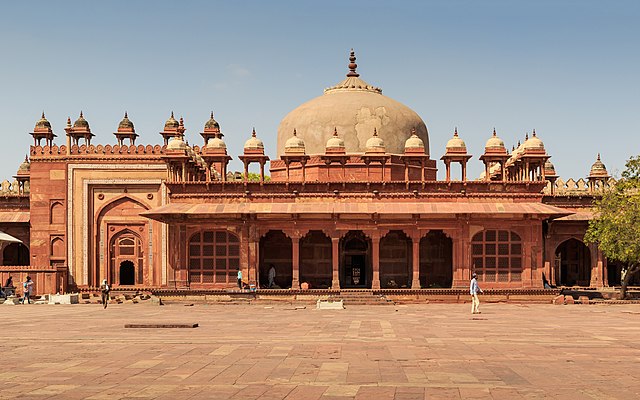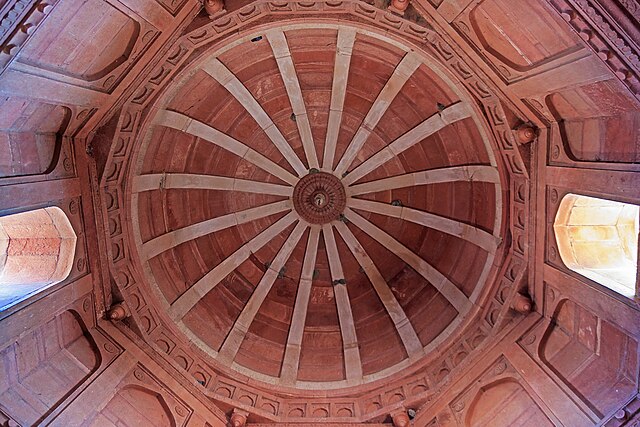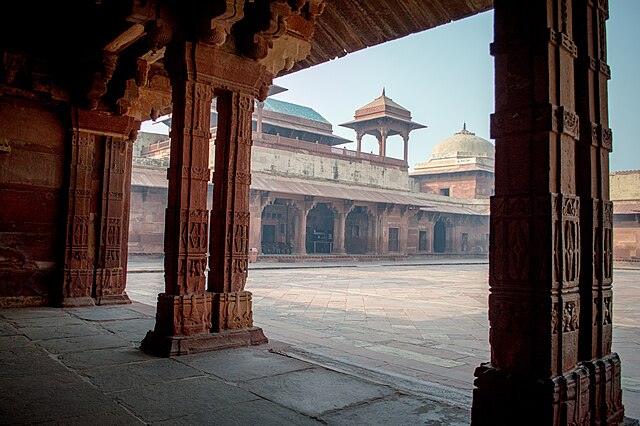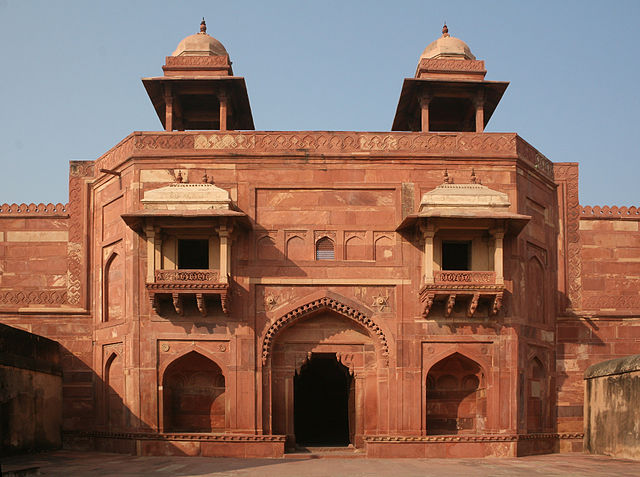Have you ever wondered what it would be like to walk through a perfectly preserved 16th-century Mughal city? Welcome to Fatehpur Sikri, where every stone tells a story of imperial grandeur, architectural brilliance, and the dreams of one of India’s greatest emperors. This UNESCO World Heritage site stands as a testament to Akbar’s vision, frozen in time like a beautiful dream that never quite came true.
Just 40 kilometers from Agra, this red sandstone marvel beckons travelers with its mysterious charm. Why mysterious, you ask? Well, imagine building the perfect capital city, complete with palaces, mosques, and courtyards, only to abandon it after just 14 years. That’s exactly what happened here, making Fatehpur Sikri one of history’s most fascinating ghost cities.
What Makes Fatehpur Sikri So Special?
Think of Fatehpur Sikri as a time machine that transports you directly into the heart of the Mughal empire. Unlike other historical sites that have been rebuilt or modified over centuries, this city remains remarkably intact, offering visitors an authentic glimpse into 16th-century royal life.
A Brief Glimpse into History
Emperor Akbar founded Fatehpur Sikri in 1571 to honor the Sufi saint Sheikh Salim Chishti, who had blessed him with a son. The city served as the Mughal capital from 1571 to 1585, during which it witnessed the empire’s golden age. But here’s the twist – despite its grandeur, the city was mysteriously abandoned due to water scarcity issues.
Architectural Marvel of the Mughal Era
What sets Fatehpur Sikri apart is its unique blend of Islamic, Hindu, and Persian architectural styles. It’s like witnessing a cultural conversation written in stone, where different traditions come together to create something entirely new and breathtaking.
The Story Behind Akbar’s Dream City

Every great city has an origin story, and Fatehpur Sikri’s is particularly enchanting. Picture this: a powerful emperor desperate for an heir, seeking blessings from a wise saint living in a small village. When that blessing comes true, what do you do? You build an entire capital city to honor the saint, of course!
Why Did Akbar Choose This Location?
The choice wasn’t random. This rocky ridge offered strategic advantages – natural defense, elevation for better views, and proximity to important trade routes. Plus, it was the home of Sheikh Salim Chishti, making it spiritually significant for Akbar.
The Rise and Fall of a Capital
For 14 glorious years, Fatehpur Sikri buzzed with activity. Courtiers walked its corridors, merchants traded in its bazaars, and royal elephants paraded through its gates. But like many ambitious projects, it faced a practical problem – water. The Yamuna River changed course, and the artificial lake couldn’t sustain the growing population. By 1585, the court had moved back to Agra, leaving behind this architectural masterpiece.
Must-Visit Monuments in Fatehpur Sikri
Ready to explore? Let’s walk through the most spectacular monuments that make Fatehpur Sikri a photographer’s paradise and history lover’s dream.
Buland Darwaza: The Gate of Victory
Standing 54 meters high, the Buland Darwaza literally means “high gate,” and boy, does it live up to its name! This massive gateway was built to commemorate Akbar’s victory in Gujarat, and it’s one of the largest gateways in the world.
Architectural Features
The gate showcases brilliant Indo-Islamic architecture with intricate geometric patterns, Quranic inscriptions, and stunning proportions. Its design creates an optical illusion – as you approach, it seems to grow even larger, emphasizing the power and grandeur of the Mughal empire.
Best Photography Spots
For the perfect shot, position yourself at the base looking up during the golden hour. The contrast between the red sandstone and the blue sky creates a dramatic effect that’s pure Instagram gold.
Jama Masjid: The Grand Mosque
This isn’t just any mosque – it’s one of the largest mosques in India, capable of accommodating 25,000 worshippers. The central courtyard, surrounded by pillared corridors, creates a sense of serenity that’s almost palpable.
Tomb of Salim Chishti
Here lies the saint who changed the course of Mughal history. This white marble tomb, in stark contrast to the red sandstone surroundings, is a masterpiece of craftsmanship.
The Marble Marvel
The tomb features exquisite marble lattice work (jali) that’s so fine, it looks like lace carved in stone. Each panel tells a story through its intricate geometric patterns and calligraphy.
Spiritual Significance
Even today, people from all faiths visit this tomb to seek blessings for children. The tradition of tying threads to the marble screens continues, creating a moving testament to enduring faith.
Palace Complex: Where Royalty Once Lived

The royal complex is where the magic really happens. These aren’t just buildings; they’re stage sets where the drama of empire unfolded daily.
Diwan-i-Khas (Hall of Private Audience)
This unique building features a single central pillar that branches out like a tree, supporting a circular platform. Akbar would sit here for private discussions, literally elevated above his courtiers in one of history’s most innovative throne rooms.
Diwan-i-Am (Hall of Public Audience)
A more traditional space where the emperor met with common people and heard their grievances. The simplicity of this hall speaks to Akbar’s reputation as a ruler who cared about his subjects.
Panch Mahal: The Five-Story Wonder
Think of this as the world’s first high-rise recreational complex! This five-story pyramid structure served as a pleasure pavilion for the royal ladies.
Unique Architecture
Each floor has different numbers of columns (84, 56, 20, 12, and 4 respectively), creating a unique tapering effect. The building has no walls, allowing cool breezes to flow through – an ancient form of air conditioning!
Royal Entertainment Hub
The ladies of the court would use this space for games, music, and relaxation while enjoying panoramic views of the city below.
Hidden Gems Most Tourists Miss
Want to explore like a true insider? These lesser-known spots offer quieter moments of discovery.
Birbal’s House
Named after Akbar’s favorite courtier, this building showcases beautiful Hindu architectural elements with its brackets, carvings, and sloping roofs. It’s proof of Akbar’s inclusive approach to culture and religion.
Turkish Sultana’s House
This ornate building, possibly built for one of Akbar’s wives, features stunning stone carvings and a unique blend of Turkish and Indian architectural styles.
The Mint
Where the empire’s coins were made! This often-overlooked building played a crucial role in the economic life of the capital.
Planning Your Visit to Fatehpur Sikri
Timing is everything when it comes to experiencing this magnificent site to its fullest.
Best Time to Visit
October to March offers the most pleasant weather, with comfortable temperatures for walking around the extensive complex. Early morning (sunrise) and late afternoon visits provide the best lighting for photography and comfortable temperatures.
Entry Fees and Timings
The site is open from sunrise to sunset daily. Indian citizens pay ₹50, while foreign tourists pay ₹650. Audio guides are available for an additional fee and highly recommended for first-time visitors.
Getting There from Agra
The journey from Agra is part of the adventure, offering glimpses of rural Indian life along the way.
By Road
The most convenient option is hiring a taxi or taking a bus. The 40-kilometer journey takes about an hour and offers scenic countryside views.
By Train
Fatehpur Sikri railway station is well-connected, though less frequent than road options. The train journey offers a more local experience.
Where to Stay Near Fatehpur Sikri

While most visitors come as a day trip from Agra, staying nearby offers the advantage of experiencing the site during golden hours.
Luxury Hotels
Several heritage hotels in Agra offer comfortable accommodations with easy access to both the Taj Mahal and Fatehpur Sikri.
Budget Accommodations
Local guesthouses and budget hotels provide clean, simple accommodations for travelers seeking authentic experiences.
Local Cuisine and Shopping
No visit is complete without experiencing local flavors and crafts.
Must-Try Local Dishes
The area is famous for its Mughlai cuisine. Don’t miss the local biryanis, kebabs, and traditional sweets. Street food near the entrance offers authentic flavors at budget prices.
Shopping for Handicrafts
Local artisans continue centuries-old traditions of stone carving, marble inlay work, and textile crafts. The shops near the entrance offer everything from miniature replicas of monuments to traditional Indian textiles.
Photography Tips for Fatehpur Sikri
Want to capture the magic? Here’s how to make your photos truly special.
Golden Hour Magic
The red sandstone literally glows during sunrise and sunset, creating magical lighting conditions. Plan your visit to coincide with these times for truly spectacular shots.
Equipment Recommendations
A wide-angle lens captures the grandeur of the monuments, while a telephoto lens helps isolate architectural details. Don’t forget extra batteries – you’ll be taking lots of photos!
Conclusion
Fatehpur Sikri isn’t just a destination; it’s a journey through time that leaves you pondering the rise and fall of empires, the dreams of great rulers, and the enduring power of human creativity. This ghost city, frozen in red sandstone, continues to inspire visitors with its perfect blend of architectural brilliance and historical significance.
Whether you’re an architecture enthusiast, history buff, or simply someone who appreciates beauty, Fatehpur Sikri offers an experience that stays with you long after you’ve left. It reminds us that even the mightiest empires leave behind stories written in stone, waiting for curious travelers to discover and share them.
So pack your camera, bring your sense of wonder, and prepare to step into one of India’s most magnificent time capsules. Fatehpur Sikri isn’t just waiting to be visited – it’s waiting to be experienced.
Frequently Asked Questions (FAQs)
1. How much time should I allocate for visiting Fatehpur Sikri?
A thorough visit typically takes 3-4 hours, though photography enthusiasts and history lovers might want to spend 5-6 hours to fully appreciate the intricate details and explore all the monuments at a leisurely pace.
2. Is Fatehpur Sikri suitable for elderly visitors and those with mobility issues?
While the site involves considerable walking on uneven surfaces and stairs, the main monuments are accessible. Golf carts are available for hire at the entrance, and most major attractions can be viewed without extensive climbing.
3. Can I visit Fatehpur Sikri and the Taj Mahal in the same day?
Absolutely! Many travelers combine both sites in a single day trip from Delhi or as part of their Agra itinerary. Start early with Fatehpur Sikri (cooler temperatures) and visit the Taj Mahal in the afternoon or at sunset.
4. What should I wear when visiting Fatehpur Sikri?
Comfortable walking shoes are essential due to uneven surfaces. Modest clothing covering shoulders and knees is recommended, especially when visiting the mosque area. Light, breathable fabrics work best in the warm climate.
5. Are there any special festivals or events held at Fatehpur Sikri?
The site occasionally hosts cultural events and light and sound shows, especially during tourist season (October-March). The annual Urs festival at Salim Chishti’s tomb attracts thousands of devotees and offers a unique cultural experience for visitors.

